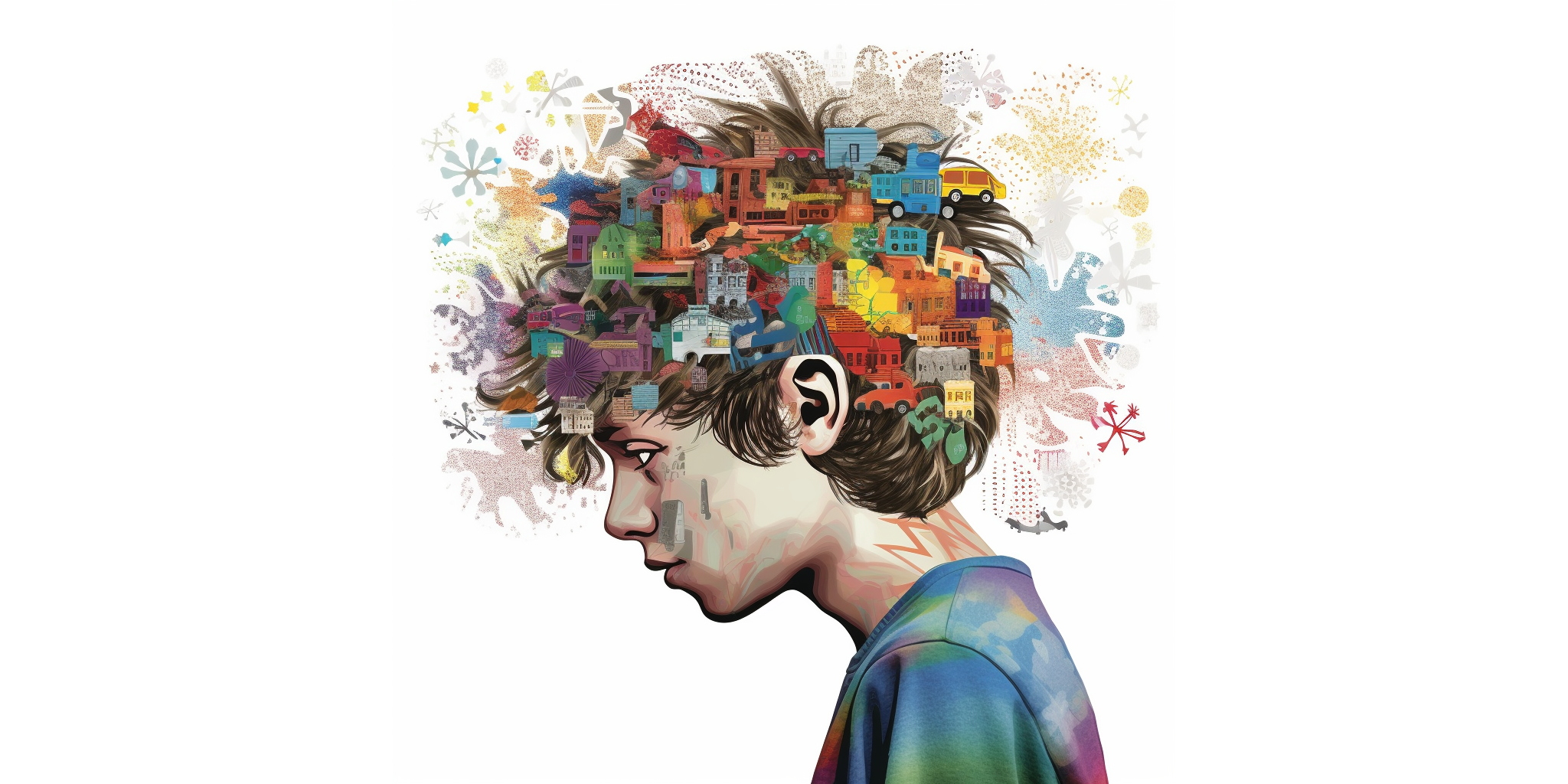
Autism spectrum disorder (ASD) is a complex neurodevelopmental disorder characterized by a range of behavioral, social, and communication challenges. There’s a common myth that “everyone is on the spectrum,” which can lead to misconceptions and misunderstandings about autism. In this blog post, we will delve deeper into the true nature of autism, the meaning behind the statement “everyone is on the spectrum,” and explain the DSM-5 diagnostic criteria to help our readers better understand and support individuals with autism.
Understanding Autism Spectrum Disorder
Autism spectrum disorder (ASD) is a lifelong neurodevelopmental condition that affects how individuals perceive and interact with the world around them. People with ASD often have difficulties with social communication, forming relationships, and understanding nonverbal cues. They may also exhibit repetitive behaviors, have narrow interests, and experience sensory sensitivities. The severity of these symptoms can vary greatly from person to person, making it a “spectrum” disorder.
Debunking the Myth: “Everyone is on the Spectrum”
The phrase “everyone is on the spectrum” suggests that everyone exhibits some traits or characteristics associated with autism. While some people may exhibit a few traits similar to those seen in individuals with autism, this does not mean they have the disorder. Exhibiting certain traits does not warrant a diagnosis, as a formal diagnosis requires significant impairments that impact daily functioning. It’s crucial to remember that everyone’s personality and behavioral traits are diverse, and we should not conflate quirks or idiosyncrasies with a clinical diagnosis.
The DSM-5: Diagnostic Criteria for Autism Spectrum Disorder
The Diagnostic and Statistical Manual of Mental Disorders (DSM-5) is the primary resource used by mental health professionals to diagnose psychological and psychiatric conditions, including autism. The DSM-5 provides specific criteria for diagnosing ASD, which include:
- Persistent deficits in social communication and social interaction across multiple contexts, as manifested by the following:
- Deficits in social-emotional reciprocity.
- Deficits in nonverbal communicative Behaviors used for social interaction.
- Deficits in developing, maintaining, and understanding relationships.
- Restricted, repetitive patterns of behavior, interests, or activities, as manifested by at least two of the following:
- Stereotyped or repetitive motor movements, use of objects, or speech.
- Insistence on sameness, inflexible adherence to routines, or ritualized patterns of behavior.
- Highly restricted, fixated interests that are abnormal in intensity or focus.
- Hyper- or hypo-reactivity to sensory input or unusual interest in sensory aspects of the environment.
- Symptoms must be present in the early developmental period (but may not become fully manifest until social demands exceed limited capacities or may be masked by learned strategies in later life).
- Symptoms cause clinically significant impairment in social, occupational, or other important areas of current functioning.
- These disturbances are not better explained by intellectual disability or global developmental delay.
Why Isn’t Everyone Diagnosed with Autism?
Not everyone who exhibits a few traits associated with autism meets the DSM-5 diagnostic criteria. To be diagnosed with ASD, an individual must display significant impairments that affect their daily functioning. The diagnostic process often involves a comprehensive evaluation by a team of professionals, including a clinical psychologist or psychiatrist, a speech and language therapist, and an occupational therapist.
The Importance of Accurate Understanding and Acceptance
Misconceptions about autism, such as the idea that “everyone is on the spectrum,” can perpetuate stereotypes and misunderstandings about the disorder. It is essential to recognize the unique challenges and strengths of individuals with autism and to provide accurate information and understanding to foster acceptance and support.
The Three Levels of Autism: Severity and Support Needs
The DSM-5 categorizes autism spectrum disorder into three levels based on the severity of symptoms and the level of support required. The three levels are:
Level 1: Requiring Support
Individuals at this level show noticeable impairments in social communication, even with support. They may have difficulty initiating social interactions and may exhibit atypical responses to social cues. These individuals might struggle to maintain relationships and adapt to different social contexts. They also have inflexible behavior, difficulty planning and organizing, and may have narrow interests or engage in repetitive behavior’s that can interfere with daily functioning.
Level 2: Requiring Substantial Support
At this level, individuals have more significant challenges in social communication and often exhibit marked difficulties with verbal and nonverbal social cues. They may have very limited initiation of social interactions and reduced or abnormal responses to social overtures from others. These individuals typically demonstrate repetitive behaviors and narrow interests that are clearly observable and interfere with functioning in various contexts. They may also have difficulty coping with change and exhibit significant distress when routines are disrupted.
Level 3: Requiring Very Substantial Support
Individuals at this level have severe impairments in social communication, often leading to minimal initiation of social interactions and minimal response to social cues from others. They may exhibit extremely limited or absent communication skills and may require the support of augmentative or alternative communication methods. Their repetitive behaviors and narrow interests are highly restrictive and interfere with functioning across all contexts. These individuals often require assistance to perform daily tasks and may have difficulty adapting to change, leading to extreme distress when routines are altered.
In conclusion understanding autism spectrum disorder and debunking the myth that “everyone is on the spectrum” is crucial for fostering accurate information, empathy, and support for individuals with autism and their families. By breaking down the DSM-5 diagnostic criteria and explaining the three levels of autism severity, we aim to provide our readers with a comprehensive understanding of autism that will help them better appreciate the unique challenges and strengths of those living with this condition.
Autism is a complex and diverse disorder, and it’s essential to recognize that each individual on the spectrum has their own set of unique characteristics, needs, and abilities. By educating ourselves and others, we can promote a more inclusive and supportive society for individuals with autism and their families.

Leave a Reply